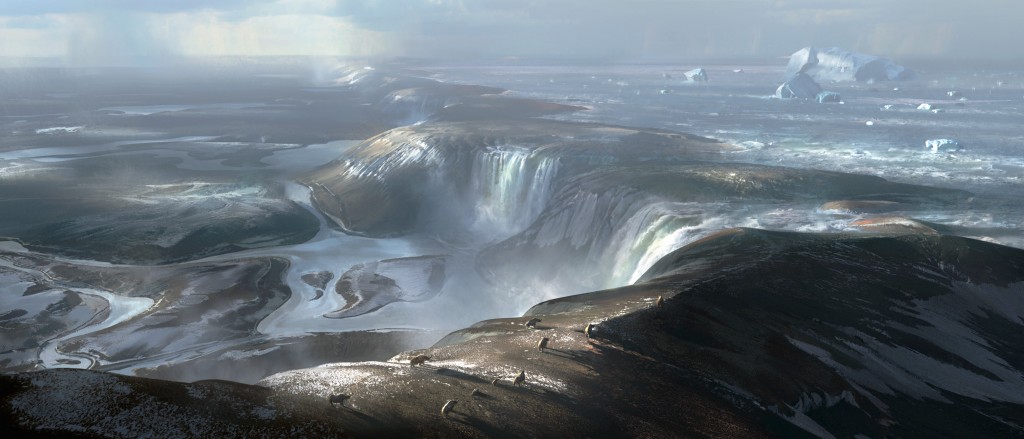
Artist’s illustration of ancient ice age land bridge connecting Britain with France. (Image by Imperial College London/Chase Stone)
Britain used to be connected to mainland Europe by a chalk bridge, which extended from southeast England to northwest France. New research suggests that two episodes of erosion created the Dover Strait, as opposed to a single glacial lake spillover, as previously thought. New evidence supports the existing theory of the initial erosion around 450,000 years ago, but also points out that a second erosion event was necessary to open the Strait. Authors suggest the definitive separation took place around 160,000 years ago, based on marine molluscs found in coastal sediment.
Authors:
Sanjeev Gupta, Jenny S. Collier, David Garcia-Moreno, Francesca Oggioni, Alain Trentesaux, Kris Vanneste, Marc De Batist, Thierry Camelbeeck, Graeme Potter, Brigitte Van Vliet-Lanoë & John C. R. Arthur
Corresponding author:
Sanjeev Gupta, Imperial College, London, UK, Email: s.gupta@imperial.ac.uk
Original paper published in Nature Communications on April 4, 2017.
